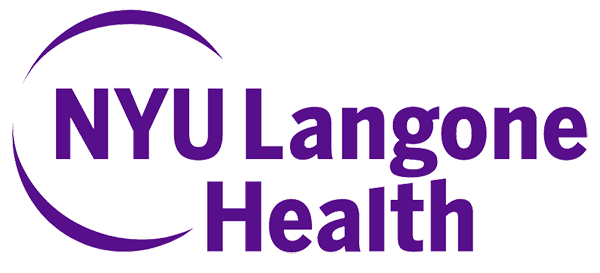While recent advancements in the treatment of multiple myeloma (MM) have led to improved overall survival (OS), patients with high-risk (HR) disease, comprising approximately 30% of cases, continue to face a poor prognosis. In response to this urgent need, we have formed a collaborative alliance among three major international myeloma centers: University of Miami, NYU Langone Health, and the Mayo Clinic. Our team will take an integrated laboratory and clinical approach to understand and target the biology of high-risk multiple myeloma and resistance to therapy. Together, we aim to drive progress and transform the care provided to the underserved group of high-risk myeloma patients. Through our collaborative network, we have unrivaled access to cutting-edge technologies, including artificial intelligence, genomic analyses, and single-cell technology. Furthermore, we leverage the invaluable insights gained from pre-clinical animal models to effectively test and refine our concepts before clinical translation. By conducting multi-level immuno-genomic analyses, we will pave the way for patient-specific therapeutic decisions in high-risk myeloma. This project represents our unwavering commitment to harnessing scientific advances and translating them into tangible clinical solutions, ultimately improving outcomes and quality of life for patients battling high-risk myeloma.
Leif Bergsagel, MD, FASCO
Consultant, Mayo Clinic Arizona
David F. and Margaret T. Grohne Professor of Novel Therapeutics for Cancer Research, Mayo Clinic College of Medicine
At Mayo Clinic we will use powerful pre-clinical models that recreate the complex interplay between the bone marrow microenvironment, the myeloma cell and the immune system to functionally validate observations made by our colleagues at the University of Miami and NYU. We will address what is one of the most fundamentally important questions in the treatment of patients with high-risk myeloma: How is it that we can eliminate all traces of the disease in the serum and bone marrow aspirate (with a sensitivity of one myeloma cell in one million bone marrow cells), and yet the disease can eventually relapse? We postulate the answer lies in the niche in which the surviving cells persist, and the state in which they are able to evade therapy.
Gareth Morgan, MD, PhD
Professor of Medicine and Director Myeloma Research
NYU Grossman School of Medicine
Perlmutter Cancer Center
NYU Langone Health
Previously MM has had a dismal outcome, however, with recent advances in treatment overall survival (OS) has improved. Despite these improvements, patients with high-risk (HR) disease (approx. 30% of cases) continue to have a poor outcome. We will use the complementary expertise of three major international myeloma centers (NYU Langone Health, Univ. of Miami, and Mayo Clinic) who will collaborate to enhance progress for the under-served group of patients with high-risk disease. Our collaborative network includes cutting edge access to artificial intelligence, genomic analyses, and single cell technology together with animal models in which pre-clinical concepts can be effectively tested to provide a powerful approach able to translate scientific advances into the clinic for high-risk myeloma. We will take an integrated laboratory and clinical approach in three main aims to understand and target the biology of high-risk multiple myeloma and resistance to therapy. We will dissect the biology underlying high-risk myeloma and develop approaches, which can manipulate high-risk behavior to improve our capacity to treat this group of cases with the worst outcomes after therapy. This program will allow us to build a strategy for rapidly moving basic biological understandings to the clinical by the development of prognostic and predictive diagnostic tools using artificial intelligence. The NYU Langone site of the collaboration will focus on genomics, bioinformatic analyses and multi-modal sequencing efforts to understand the tumor and the microenvironment.
C. Ola Landgren, MD, PhD
Professor of Medicine
Chief, Division of Myeloma, Department of Medicine
Sylvester Comprehensive Cancer Center at the University of Miami
At Sylvester Comprehensive Cancer Center at the University of Miami, we will use artificial intelligence to integrate clinical, demographic, therapeutic, genomics and minimal residual disease (MRD) data to predict clinical outcome and facilitate patient-specific tailored therapeutic decisions in newly diagnosed multiple myeloma. We will analyze a large series of newly diagnosed multiple myeloma patients treated with novel drug combinations (i.e., proteasome inhibitors, immunomodulatory agents, anti-CD38 monoclonal antibodies (MoAb)). The genomic landscape of each patient will be comprehensively characterized and integrated with demographic, clinical, treatment, and MRD data to develop the first artificial intelligence-based multi-stage prediction model aimed at identifying either patients who can achieve sustained MRD-negativity without intense chemotherapy regimens or patients who are currently refractory and resistant to our most intense and effective strategies. Features found in this MRD-driven analysis will be validated on an independent cohort of newly diagnosed multiple myeloma with available clinical, demographic, treatment, genomic, and MRD data. We will also seek to determine genomic and immune drivers responsible for defining mechanisms of resistance to anti-CD38 MoAb-based regimen. The disease response in patients treated with anti-CD38 MoAb-based regimen will be evaluated integrating innovative genomic approaches with MRD data. Residual tumor cells disease will be comprehensively investigated through low-input whole-genome and single-cell transcriptome sequencing to identify key immune and genomic drivers. Results from this investigation will be then compared to the baseline and eventual relapse in order to determine the genomic and immunologic basis for drug resistance.





